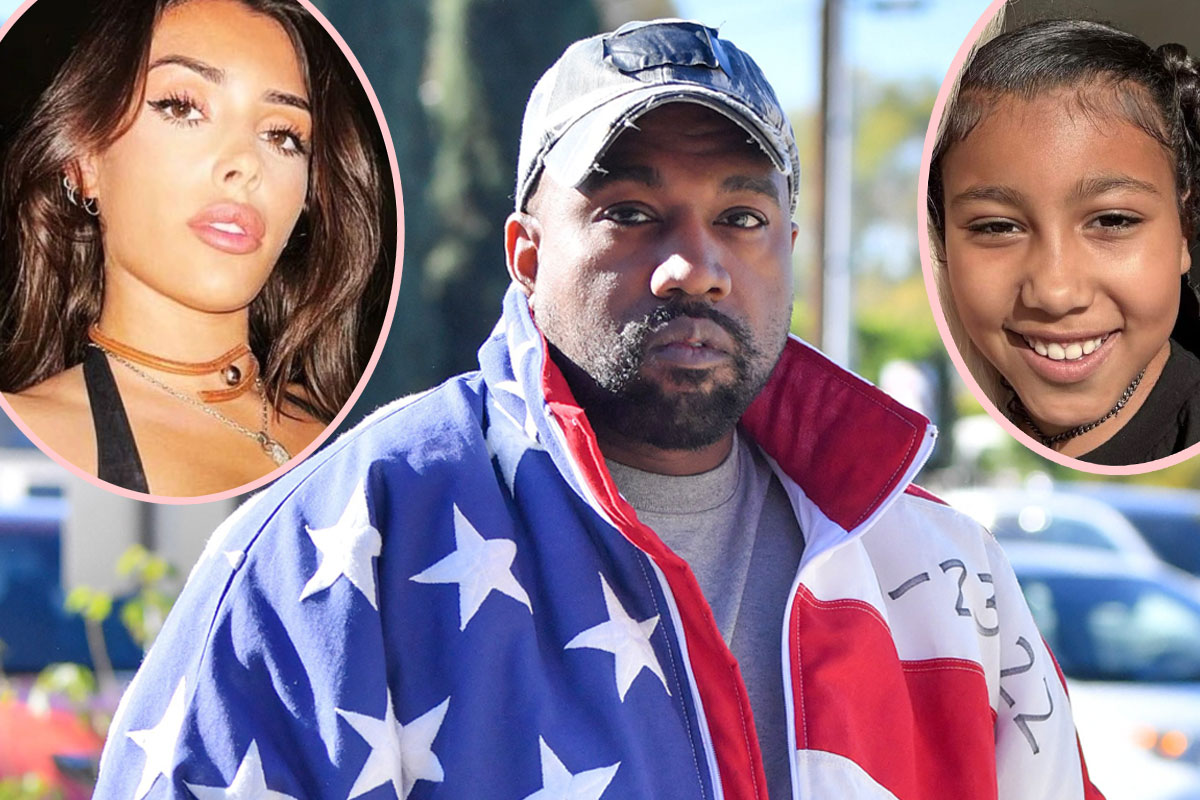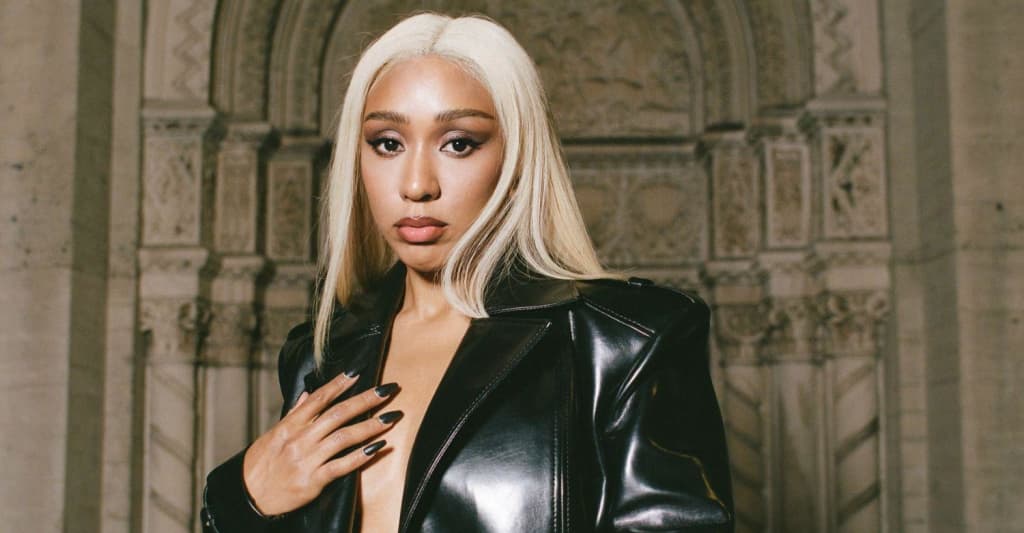#How L’Rain helped build Celebrate Brooklyn! 2023’s phenomenal lineup
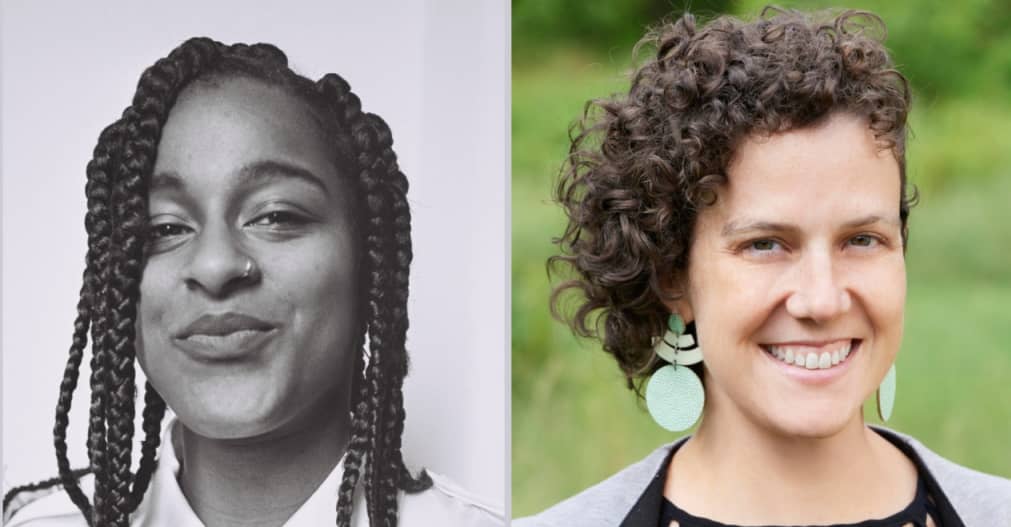
Table of Contents
In the weeds with the summer concert series’ executive producer and artistic director, Diane Eber, and its first-ever artist curator, L’Rain.
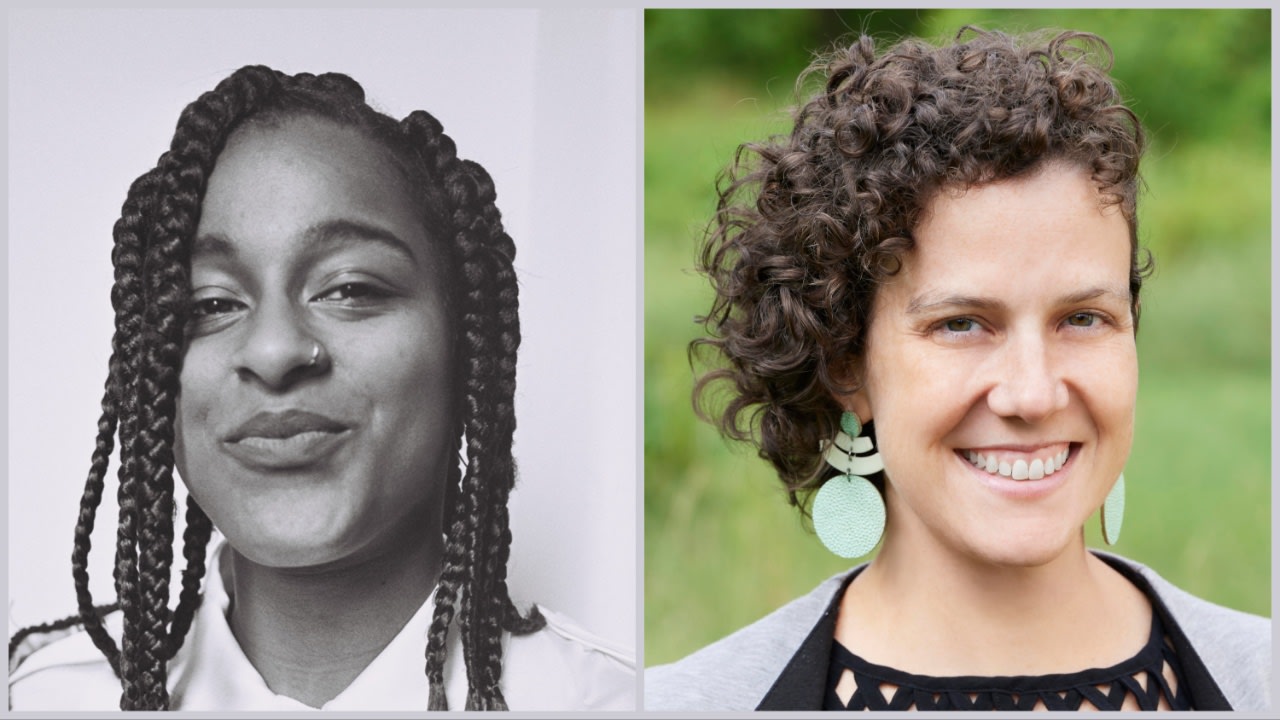
Left: Taja Cheek (L’Rain), photo by June Canedo. Right: Diane Eber, photo courtesy of BRIC.
Every spring, Brooklynites eagerly await a colorful flier in the mail. It arrives without fail in early May, with CELEBRATE BROOKLYN! emblazoned at the top and an eclectic musical lineup spilling out below. Returning to Prospect Park for its 45th summer this year, Celebrate! is New York’s longest-running free concert series, beating out its Manhattan counterpart, Central Park SummerStage, by seven years. The flagship program of the non-profit Fund for the Borough of Brooklyn (now BRIC Arts Media), it counts itself among the rapidly shrinking number of indisputably good, recurring events in a city that cedes millions of square feet per year of potential affordable housing and artist spaces to the glut of corporate development.
Diane Eber has been with BRIC for the better part of 15 years: She came on as an associate producer in 2008, left for a senior curatorial role at The OFFICE of Performing Arts & Film in 2016, and returned in 2021 as an executive producer — the same season the series itself returned to the newly renamed Lena Horne Bandshell after a year online due to COVID-19. 2023 marks the first summer she’s held the additional title of Artistic Director, a position from which she felt comfortable bringing on Taja Cheek (aka L’Rain) as the festival’s first-ever artist curator.
Well underway now, Celebrate! 2023 has already hosted some elite headliner/opener combinations: Two weeks after Taj Mahal, Corinne Bailey Rae, and The Harlem Gospel Travelers opened the gates in early June, Japanese trumpeter Takuya Kuroda set the stage for Mexican drummer Antonio Sánchez’s live performance of his Birdman score; and BJ the Chicago Kid kicked off a benefit concert also featuring Robert Glasper, Lalah Hathaway, and Bilal in trio, as well as Anderson .Paak and Knxwledge’s NxWorries. This month, Liv.e opened for a ridiculously packed, unanimously well-received Kelela concert; and Lucrecia Dalt graced fans of The Chelsea Symphony with her alien energy. The season closes August 24, its final night featuring Izzy Heltai and The Head and the Heart — but not before Vundabar opens for Indigo de Souza and the legendary John Cale takes the stage with support from Tomberlin. The fact that these acts are just a small sampling of the festival’s full breadth speaks to its expansiveness and vitality..
Last month, as BRIC Celebrate Brooklyn! advanced into full swing, I spoke with Taja and Diane about their personal histories with the series, the massive and remarkably democratic logistical project of programming 2023’s terrific bill, the role of the curator across media, and why the term “curator” is rampantly overused and often a gross misrepresentation of the role “curators” actually fulfill.
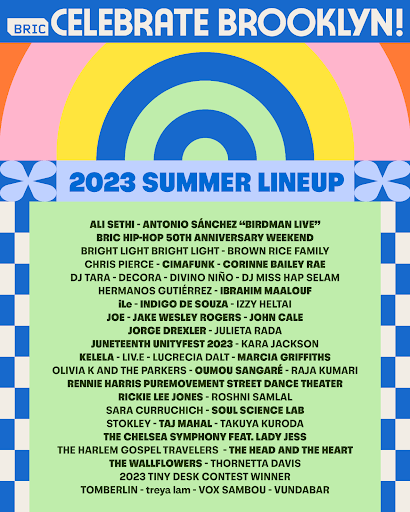
The FADER: Tell me about your early experiences of Celebrate Brooklyn!. Did you go as kids, and do you have any particular memories that stick out?
Taja Cheek: I remember getting the flyers in the mail. That was always a big deal because I would plan my summer around all of the free shows that were happening in Brooklyn. I didn’t have a fake ID. I didn’t have a way to get into clubs. Free shows were the only way I could access culture, so getting that in the mail was always important to me.
I remember trying to get into David Byrne [in 2009], and it was too full, so I was dancing outside with my friends. We could only see a little bit, but that didn’t matter because we could hear everything. That’s a core memory of growing up.
Diane Eber: David Byrne was the first show I worked at Celebrate Brooklyn! My core memory is I was so eager to hook people up with the black all-access wristband and give them the tour that I did that to these two dudes who rolled up, like, “I’m the drummer.” An hour in, the tour manager pulls me aside, like, “Who are those guys?” I’m like, “They’re in the band. They’re the drummer.” And he’s like, “No, they’re not. I’ve never seen them before in my life. Who the fuck are they?” Turns out they were friends of the drummer. I learned on that day you always have to check the personnel list.
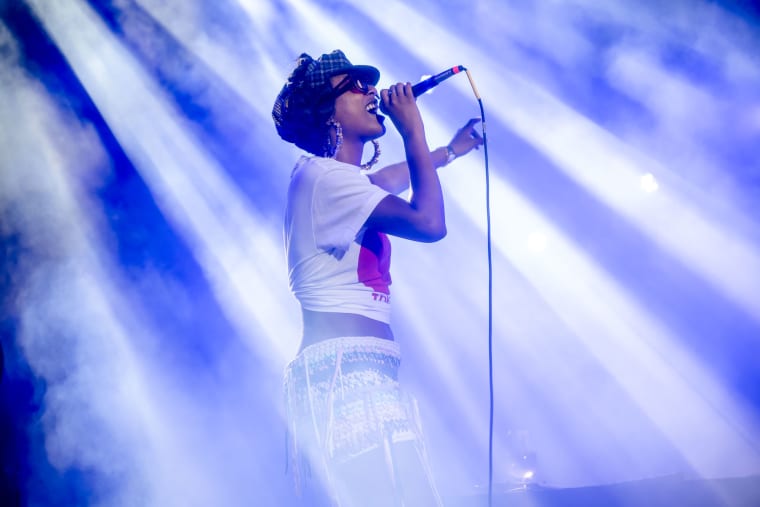
Liv.e. Photo by Edwina Hay.

Kelela. Photo by Edwina Hay.
“It’s about that quilt, the matrix of it. It’s not just one show. You have to look at the whole season.”
What were your biggest concerns when you began programming the lineup for Celebrate Brooklyn! 2023?
DE: We usually start with tent poles — those artists who, no matter what else happens, you know you want in your season. You’ll pay whatever price you have to and give them whatever date they want. There’s a few artists who do things no other artist can do for us, in terms of audience draw or the artistic statement they’re making. Once you lock in a few of those tent poles, you get to play a little.
TC: It’s about people seeing the music they love, but also exposing people to things they might not know they love. An artist who doesn’t have as big a fanbase as a headliner is better served when we know that we can bring lots of people, and that either the headliner’s audience is either gonna love the opener or be surprised in a really interesting way. It’s the practical reality of people being there, but also throwing in surprises so people can see things they aren’t expecting and later learn they love.
DE: The beauty of Celebrate Brooklyn!, and the gift that Taja and I get to carry, is digging into its deep history. We have a trusted curatorial voice. Our community looks for that lineup, for those brochures. We’re one of the few festivals that still print brochures. It’s about that quilt, the matrix of it. It’s not just one show. You have to look at the whole season.
TC: It’s making sure people have a moment to dance, to be reflective; making sure classical music is being represented, and new music, and jazz. We’re thinking about it in terms of genre, to some extent, but we’re also just showing the breadth of music that people in Brooklyn like to listen to.
“It’s making sure not only to storyboard for a season but also to think about seasons in relation to one another. There’s a lot of levels to it.”
Is the season storyboarded in any way? Do you think of it as an arc? Are you looking for rises and falls in tension?
DE: We map it out in a spreadsheet. At first, it feels overwhelming, like, “Oh my gosh, it could be anything. We have so many shows to book.” Then you start locking in some tent poles, and it’s like, “Okay, we’ve got our Caribbean show, our killer jazz show, our weird classical mind expansion show. Now where do we put our indie rock show? Where are we doing hip-hop?”
Sometimes, we’re debating: “Is it this artist or that one? They both kinda do the same thing.” You’ve gotta look at their draw and where they are in their careers and in their record release schedules. It was fun having an artist on our team, because Taja would be like, “Oh, I’ll just text my friend who’s in the band.” It’s important to have different perspectives at the table.
TC: It’s also hard sometimes because Celebrate Brooklyn! has been happening for so long that we’d have artists in mind and then find out they just played two years ago. So it’s making sure not only to storyboard for a season but also to think about seasons in relation to one another. There’s a lot of levels to it.
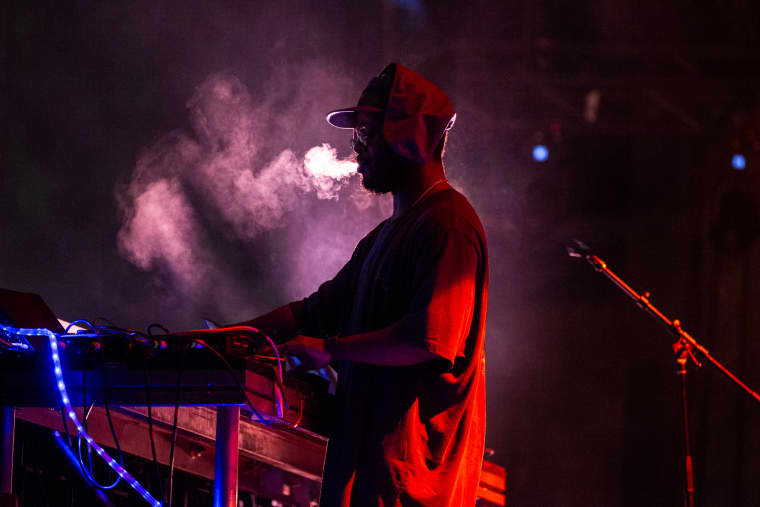
Knxwledge. Photo by Ellen Qbertplaya.

Robert Glasper. Photo by Julia Drummond.
“When things in life are beyond our comprehension, bigger than we can grapple with, we turn to artists to help us get through that time, to help define what our expression is.”
What made Celebrate! decide to bring on an artist curator for the first time this year, and why Taja?
DE: This was my first year as our artistic director, and it’s something I’ve always dreamed of, so I was committed to doing it this year. It’s quite hard to find the right person. The beauty of Taja is that she lives in both worlds. She has her own curatorial practice at various places. She does it on her own time. And the fact that she grew up in Brooklyn… It was all these incredible parts coming together.
Artist curator can mean so many things. Sometimes they’re very much figureheads and they don’t come to any meetings. They stamp their artists’ seal of approval on whatever the programmers do. And sometimes they’re in the weeds, negotiating deals, there at every step of the process. I was open to wherever it would land; it just had to feel like the right fit. But Taja blew it out of the water.
I’d like to hear more about how both of you envision the role of the curator in culture at large. What do you see as a curator’s most important responsibilities?
TC: Being a curator is a public service in a lot of ways. The word is used a lot, and I think it’s overused. It’s not about just picking things you like. Oftentimes, it doesn’t have much to do with your own taste at all. It’s about understanding context, understanding an audience, and doing your best to serve the audience in the context. Sometimes personal taste comes into it, but a lot of times it’s just about making the best possible program for the program’s goals.
It should be, in some ways, selfless. Obviously, I’m a person, and my own taste will get in there somehow. But it’s really about serving the public. What’s so great about Celebrate Brooklyn! is that so much of the programming is free. That’s an even bigger and more important responsibility because a lot of the free entertainment in New York has disappeared, and in its place are really expensive festivals that are hard to access. It’s important that a festival that’s so accessible has been going for so long.
DE: We started by setting an intention for this season, and it’s about reflecting on this moment and connecting to your audience — it does truly come down to audience. The curatorial vision of this season was looking to the future while honoring our past. That’s pretty meta. What is happening in humanity right now? What is our future? Global warming — this shit is real.
When things in life are beyond our comprehension, bigger than we can grapple with, we turn to artists to help us get through that time, to help define what our expression is. Thinking about this stage as a platform for art to reach audiences is the job of the curator. Are you serving that? Are you coming back to that core purpose? Do the artists fit through that lens?
Sure, Taja and I geeked out on a few shows when they confirmed. Every curator has their own taste, and you can see it when you look at the lineups they tend to book. But I agree with Taja: It’s not really about personal taste.
TC: It’s also not as glamorous as people think. It’s a lot of logistics, spreadsheets, budgets. I hate that the term [“curator”] is so overused because it’s really not about choosing stuff. It’s about plotting out who can make it on this specific day. Do we have the equipment they need? Will they be able to get to their next gig?
Is there a term that you’d prefer to curator, if we could phase it out entirely?
TC: I don’t know if there’s anything that really works yet. I like calling myself an art worker or a cultural worker, or sometimes I call myself a programmer because that seems to fit better and doesn’t have all the baggage that “curator” does.
DE: I tend to use “programmer” too. The problem is it has a very strong IT connection, and to artsy weirdos, it’s like, “You’re a programmer?!” I’m like, “Oh no, the polar opposite of that.”

Edwina Hay
Taja, do you see parallels between your musical creative process and the process of programming a festival?
Definitely. Musicians — maybe more so than other types of artists— have to exercise those curatorial muscles often, because you have to find people to play with on bills. If you wanna play, you have to find a community. You have to know who else is out there, where the venues are, how to get your gear there. There are all these logistics you have to think through all the time as a musician, if you’re playing on a regular basis. That’s how I started getting into this. It was an investment in the community around me.
How was Celebrate! a different challenge for you from the other programming you’ve done?
TC: It was cool to be working alongside people who’ve done this for so long, especially learning from other women in an industry that’s dominated by men. It was cool to be in a situation where I wasn’t a lone wolf. Another thing I thought was really cool was that the broader staff was brought into the process of putting together the season. That’s something I’ve always been interested in exploring: hearing everybody’s ideas and seeing how they would approach things. They had so much knowledge of the program and a general openness of communication. The curatorial process can be really closed and not so experimental — even stuck up, sometimes — so it’s cool to be in an environment where that was not the case.
DE: What she’s talking about is that, for the first time ever this year, in addition to having an artist curator, we also formed an artistic programming committee for anyone at BRIC. We have visual art, community media, performing arts, and Celebrate Brooklyn!, so it’s a large staff — almost 100 people. We invited whoever wanted to join, and they came in and pitched us ideas, and we workshopped them. Some of the shows on our stage happened because a person in the marketing department or somebody in development was like, “You should book this band!”
Do you think you’ll do that again?
DE: Yeah, but you have to do it in a very structured way because it’s tricky. To Taja’s point, it’s not picking our favorite bands and putting them on stage, so there’s gonna be lots of ideas that come in that don’t happen. We worked hard to set expectations and structure it so that communication felt open and people felt heard. If you wanna be a programmer, it’s so hard to figure out how to do that as a job. So this is the first step in BRIC’s commitment to opening up that process, like, “Come on over to BRIC. Try it out with us. We’ll find safe ways to play around with your ideas.” Having an idea and then seeing it come to life on stage is an incredible feeling.
TC: When I graduated college, I knew immediately I wanted to be a curator. I talked to some alumni, and they were like, “Just don’t, it’s too hard.” Even if you know you want to do this work, there are very few avenues to figure out how to actually do it.
DE: I got the exact same advice.
TC: I love that.
DE: Look at us now.
If you liked the article, do not forget to share it with your friends. Follow us on Google News too, click on the star and choose us from your favorites.
For forums sites go to Forum.BuradaBiliyorum.Com
If you want to read more Like this articles, you can visit our Social Media category.


